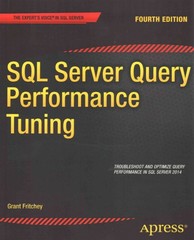Question
Construct a computer program that uses both the secant method and the Runge-Kutta method (that you developed in assignment #3) to obtain a numerical solution
Construct a computer program that uses both the secant method and the Runge-Kutta method (that you developed in assignment #3) to obtain a numerical solution to the two-point boundary-value problem: x' = f(t,x) = x + 0.09 x 2 + cos(10 t) differential equation x(0) + x(1) - 3.0 = 0 boundary condition Starting with the initial guesses 0.7 and 1.0 for the (unknown) initial value, x(0), obtain an approximation to x(0) {for the final solution, x(t)} such that the boundary condition is satisfied to within a tolerance of 10-4 . Use a fixed stepsize of 0.025 (i.e., take 40 steps each time you integrate the differential equation from t=0 to t=1). Write your program so that the output shows the values of x(0), x(1), and x(0)+x(1)-3 (the error in satisfying the boundary condition) at the end of each iteration of the secant method. After the last iteration of the secant method, re-integrate from t=0 to t=1 and print out the solution for x(t) over the range [0,1].
I have used this code so far but I feel there is something missing, I would need help on improving it so I can fulfill the conditions stated above.
import java.lang.*;
public class TwoPointValue {
static final int n = 100, m = 5;
public static void main(String argv[]) {
double y1[] = new double [n+1];
double y2[] = new double [n+1];
double y[] = new double [2];
double h = 1.0/n;
// Find the 1st solution via Runge-Kutta method
y[1] = 1;
for (int i=0; i double x = h*i; y = rungeKutta(y, x, h); y1[i+1] = y[0]; } // Find the 2nd solution via Runge-Kutta method y[0] = 0; y[1] = 2; for (int i=0; i double x = h*i; y = rungeKutta(y, x, h); y2[i+1] = y[0]; } // Superpose two solutions found double a = (y2[n]-1)/(y2[n]-y1[n]); double b = (1-y1[n])/(y2[n]-y1[n]); for (int i=0; i<=n; ++i) y1[i] = a*y1[i]+b*y2[i]; // Output the result in every m points for (int i=0; i<=n; i+=m) System.out.println(y1[i]); } // Method to complete one Runge-Kutta step. public static double[] rungeKutta(double y[], double t, double dt) { int k = y.length; double k1[] = new double[k]; double k2[] = new double[k]; double k3[] = new double[k]; double k4[] = new double[k]; k1 = g(y, t); for (int i=0; i k2 = g(k2, t+dt/2); for (int i=0; i k3 = g(k3, t+dt/2); for (int i=0; i k4 = g(k4, t+dt); for (int i=0; i k1[i] = y[i]+dt*(k1[i]+2*(k2[i]+k3[i])+k4[i])/6; return k1; } // Method to provide the generalized velocity vector. public static double[] g(double y[], double t) { int k = y.length; double v[] = new double[k]; v[0] = y[1]; v[1] = -Math.PI*Math.PI*(y[0]+1)/4; return v; } }
Step by Step Solution
There are 3 Steps involved in it
Step: 1

Get Instant Access to Expert-Tailored Solutions
See step-by-step solutions with expert insights and AI powered tools for academic success
Step: 2

Step: 3

Ace Your Homework with AI
Get the answers you need in no time with our AI-driven, step-by-step assistance
Get Started


